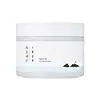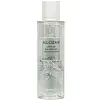What's inside
What's inside
 Key Ingredients
Key Ingredients

 Benefits
Benefits

 Concerns
Concerns

No concerns
 Ingredients Side-by-side
Ingredients Side-by-side

Water
Skin ConditioningGlycerin
HumectantButylene Glycol
HumectantPropanediol
SolventSea Water
HumectantChondrus Crispus Extract
Skin ConditioningSaccharum Officinarum Extract
Moisturising1,2-Hexanediol
Skin ConditioningPanthenol
Skin ConditioningGluconolactone
Skin ConditioningHydroxyacetophenone
AntioxidantSodium Citrate
BufferingGlyceryl Glucoside
HumectantProtease
ExfoliatingBetaine
HumectantTromethamine
BufferingDipotassium Glycyrrhizate
HumectantEthylhexylglycerin
Skin ConditioningAllantoin
Skin ConditioningTocopherol
AntioxidantXanthan Gum
EmulsifyingDisodium EDTA
Water, Glycerin, Butylene Glycol, Propanediol, Sea Water, Chondrus Crispus Extract, Saccharum Officinarum Extract, 1,2-Hexanediol, Panthenol, Gluconolactone, Hydroxyacetophenone, Sodium Citrate, Glyceryl Glucoside, Protease, Betaine, Tromethamine, Dipotassium Glycyrrhizate, Ethylhexylglycerin, Allantoin, Tocopherol, Xanthan Gum, Disodium EDTA
Water
Skin ConditioningButylene Glycol
HumectantPentylene Glycol
Skin ConditioningPropanediol
SolventRosa Damascena Flower Water
MaskingXylitol
HumectantChondrus Crispus Extract
Skin ConditioningSaccharum Officinarum Extract
MoisturisingCitrus Aurantium Dulcis Fruit Extract
MaskingChlorella Vulgaris Extract
Skin ConditioningAlthaea Officinalis Leaf Extract
Skin ConditioningChamomilla Recutita Flower Extract
MaskingBorago Officinalis Extract
EmollientCalendula Officinalis Flower Extract
MaskingEchinacea Purpurea Extract
MoisturisingEucalyptus Globulus Leaf Extract
PerfumingFoeniculum Vulgare Leaf Extract
HumectantLaurus Nobilis Leaf Extract
MaskingLavandula Angustifolia Flower/Leaf/Stem Extract
MaskingLippia Citriodora Leaf Extract
AstringentMalva Sylvestris Leaf Extract
Skin ConditioningMelissa Officinalis Leaf Extract
Skin ConditioningMentha Arvensis Leaf Extract
MaskingOriganum Majorana Leaf Extract
AntiseborrhoeicOriganum Vulgare Leaf Extract
Skin ConditioningPassiflora Incarnata Extract
AstringentPelargonium Graveolens Extract
MaskingRosa Damascena Flower Extract
MaskingRosmarinus Officinalis Leaf Extract
AntimicrobialSalvia Officinalis Leaf Extract
CleansingButyrospermum Parkii Butter
Skin ConditioningCocos Nucifera Oil
MaskingMoringa Oleifera Seed Oil
EmollientCandida Bombicola/Glucose/Methyl Rapeseedate Ferment
AntimicrobialGlycerin
HumectantPanthenol
Skin ConditioningEthylhexylglycerin
Skin ConditioningSodium Citrate
Buffering1,2-Hexanediol
Skin ConditioningCitric Acid
BufferingGlucose
HumectantOctanediol
Fructooligosaccharides
HumectantFructose
HumectantGluconolactone
Skin ConditioningTocopherol
AntioxidantOctyldodecanol
EmollientCeramide NP
Skin ConditioningPhytosphingosine
Skin ConditioningHydrogenated Lecithin
EmulsifyingGlycine Soja Sterols
EmollientXanthan Gum
EmulsifyingOleyl Alcohol
EmollientWater, Butylene Glycol, Pentylene Glycol, Propanediol, Rosa Damascena Flower Water, Xylitol, Chondrus Crispus Extract, Saccharum Officinarum Extract, Citrus Aurantium Dulcis Fruit Extract, Chlorella Vulgaris Extract, Althaea Officinalis Leaf Extract, Chamomilla Recutita Flower Extract, Borago Officinalis Extract, Calendula Officinalis Flower Extract, Echinacea Purpurea Extract, Eucalyptus Globulus Leaf Extract, Foeniculum Vulgare Leaf Extract, Laurus Nobilis Leaf Extract, Lavandula Angustifolia Flower/Leaf/Stem Extract, Lippia Citriodora Leaf Extract, Malva Sylvestris Leaf Extract, Melissa Officinalis Leaf Extract, Mentha Arvensis Leaf Extract, Origanum Majorana Leaf Extract, Origanum Vulgare Leaf Extract, Passiflora Incarnata Extract, Pelargonium Graveolens Extract, Rosa Damascena Flower Extract, Rosmarinus Officinalis Leaf Extract, Salvia Officinalis Leaf Extract, Butyrospermum Parkii Butter, Cocos Nucifera Oil, Moringa Oleifera Seed Oil, Candida Bombicola/Glucose/Methyl Rapeseedate Ferment, Glycerin, Panthenol, Ethylhexylglycerin, Sodium Citrate, 1,2-Hexanediol, Citric Acid, Glucose, Octanediol, Fructooligosaccharides, Fructose, Gluconolactone, Tocopherol, Octyldodecanol, Ceramide NP, Phytosphingosine, Hydrogenated Lecithin, Glycine Soja Sterols, Xanthan Gum, Oleyl Alcohol
 Reviews
Reviews

Ingredients Explained
These ingredients are found in both products.
Ingredients higher up in an ingredient list are typically present in a larger amount.
1,2-Hexanediol is a synthetic liquid and another multi-functional powerhouse.
It is a:
- Humectant, drawing moisture into the skin
- Emollient, helping to soften skin
- Solvent, dispersing and stabilizing formulas
- Preservative booster, enhancing the antimicrobial activity of other preservatives
Butylene Glycol (or BG) is used within cosmetic products for a few different reasons:
Overall, Butylene Glycol is a safe and well-rounded ingredient that works well with other ingredients.
Though this ingredient works well with most skin types, some people with sensitive skin may experience a reaction such as allergic rashes, closed comedones, or itchiness.
Learn more about Butylene GlycolChondrus Crispus Extract comes from a red algae native to the northern Atlantic coasts of Europe and North America. It helps hydrate the skin and is rich in antioxidants.
The antioxidants in chondrus crispus include lutein and zeaxanthin. Lutein has the ability to filter blue light from screens.
Other contents of chondrus crispus include polysaccharides, peptides, and amino acids. These help hydrate the skin.
What's the difference between algae and seaweed?
Algae is a broad term that includes seaweed. Not all algae is seaweed.
Ethylhexylglycerin (we can't pronounce this either) is commonly used as a preservative and skin softener. It is derived from glyceryl.
You might see Ethylhexylglycerin often paired with other preservatives such as phenoxyethanol. Ethylhexylglycerin has been found to increase the effectiveness of these other preservatives.
Gluconolactone is a PHA. PHAs are a great gentle alternative to traditional AHAs.
When applied, Gluconolactone has the same affect on skin as AHAs such as lactic acid. It helps dissolve the dead skin cells in the top layer of your skin. This improves texture and brightens the skin.
PHAs are more gentle than AHAs due to their larger structure. They do not penetrate as deeply as AHAs and take a longer time to dissolve dead cells. Studies show PHAs do not cause as much irritation.
Gluconolactone has some interesting properties:
In a 2004 study, Gluconolactone was found to prevent UV damage in mouse skin cells and has not been found to increase sun sensitivity. However, we still recommend wearing SPF daily.
This ingredient is is an created by reacting gluconic acid with an alcohol.
Learn more about GluconolactoneGlycerin is already naturally found in your skin. It helps moisturize and protect your skin.
A study from 2016 found glycerin to be more effective as a humectant than AHAs and hyaluronic acid.
As a humectant, it helps the skin stay hydrated by pulling moisture to your skin. The low molecular weight of glycerin allows it to pull moisture into the deeper layers of your skin.
Hydrated skin improves your skin barrier; Your skin barrier helps protect against irritants and bacteria.
Glycerin has also been found to have antimicrobial and antiviral properties. Due to these properties, glycerin is often used in wound and burn treatments.
In cosmetics, glycerin is usually derived from plants such as soybean or palm. However, it can also be sourced from animals, such as tallow or animal fat.
This ingredient is organic, colorless, odorless, and non-toxic.
Glycerin is the name for this ingredient in American English. British English uses Glycerol/Glycerine.
Learn more about GlycerinPanthenol is a common ingredient that helps hydrate and soothe the skin. It is found naturally in our skin and hair.
There are two forms of panthenol: D and L.
D-panthenol is also known as dexpanthenol. Most cosmetics use dexpanthenol or a mixture of D and L-panthenol.
Panthenol is famous due to its ability to go deeper into the skin's layers. Using this ingredient has numerous pros (and no cons):
Like hyaluronic acid, panthenol is a humectant. Humectants are able to bind and hold large amounts of water to keep skin hydrated.
This ingredient works well for wound healing. It works by increasing tissue in the wound and helps close open wounds.
Once oxidized, panthenol converts to pantothenic acid. Panthothenic acid is found in all living cells.
This ingredient is also referred to as pro-vitamin B5.
Learn more about PanthenolPropanediol is an all-star ingredient. It softens, hydrates, and smooths the skin.
It’s often used to:
Propanediol is not likely to cause sensitivity and considered safe to use. It is derived from corn or petroleum with a clear color and no scent.
Learn more about PropanediolThis ingredient is also called sugarcane extract. It is a moisturizing humectant and has skin soothing properties.
Similar to hyaluronic acid, sugarcane can attract moisture to your skin.
Glycolic acid is a derivative of sugarcane. While glycolic acid is an AHA with exfoliating properties, sugarcane is not an AHA.
A study from 2021 found the compounds in sugarcane extract to have antioxidant, antimicrobial, and anti-inflammatory activity. The study also suggests these compounds can inhibit skin ageing enzymes and promote collagen synthesis.
Learn more about Saccharum Officinarum ExtractSodium Citrate is the sodium salts of citric acid. In skincare, it is used to alter pH levels and acts as a preservative.
Its main functions are to maintain the pH of a product and neutralize metal ions.
The acidity of our skin is maintained by our glands and skin biome; normal pH level of skin is slightly acidic (~4.75-5.5).
Being slightly acidic allows our skin to create an "acid mantle". This acid mantle is a thin barrier that protects our skin from bacteria and contaminants.
Learn more about Sodium CitrateTocopherol (also known as Vitamin E) is a common antioxidant used to help protect the skin from free-radicals and strengthen the skin barrier. It's also fat soluble - this means our skin is great at absorbing it.
Vitamin E also helps keep your natural skin lipids healthy. Your lipid skin barrier naturally consists of lipids, ceramides, and fatty acids. Vitamin E offers extra protection for your skin’s lipid barrier, keeping your skin healthy and nourished.
Another benefit is a bit of UV protection. Vitamin E helps reduce the damage caused by UVB rays. (It should not replace your sunscreen). Combining it with Vitamin C can decrease sunburned cells and hyperpigmentation after UV exposure.
You might have noticed Vitamin E + C often paired together. This is because it is great at stabilizing Vitamin C. Using the two together helps increase the effectiveness of both ingredients.
There are often claims that Vitamin E can reduce/prevent scarring, but these claims haven't been confirmed by scientific research.
Learn more about TocopherolWater. It's the most common cosmetic ingredient of all. You'll usually see it at the top of ingredient lists, meaning that it makes up the largest part of the product.
So why is it so popular? Water most often acts as a solvent - this means that it helps dissolve other ingredients into the formulation.
You'll also recognize water as that liquid we all need to stay alive. If you see this, drink a glass of water. Stay hydrated!
Learn more about WaterXanthan gum is used as a stabilizer and thickener within cosmetic products. It helps give products a sticky, thick feeling - preventing them from being too runny.
On the technical side of things, xanthan gum is a polysaccharide - a combination consisting of multiple sugar molecules bonded together.
Xanthan gum is a pretty common and great ingredient. It is a natural, non-toxic, non-irritating ingredient that is also commonly used in food products.
Learn more about Xanthan Gum